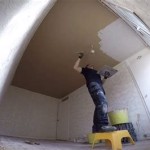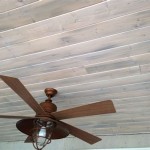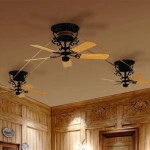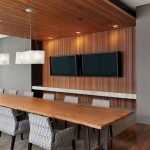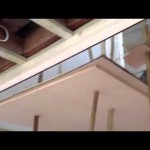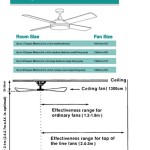What Kind of Paint Do You Use On Bathroom Ceilings?
Selecting the appropriate paint for a bathroom ceiling is a critical decision that significantly impacts the longevity, appearance, and maintenance of the space. The bathroom environment presents unique challenges due to high humidity levels, temperature fluctuations, and potential for mold and mildew growth. Therefore, understanding the different types of paint available and their specific properties is crucial for making an informed choice that ensures optimal performance and lasting results.
The primary concern when painting a bathroom ceiling is moisture resistance. Regular paints, formulated for general interior use, are not designed to withstand the constant barrage of humidity prevalent in bathrooms. These paints can quickly degrade, leading to blistering, peeling, and unsightly mold growth. Selecting a paint specifically designed for humid environments is, therefore, not just advisable but essential.
Furthermore, the finish of the paint plays a significant role in its overall performance. A higher sheen finish, such as semi-gloss or gloss, offers better moisture resistance and is easier to clean. Flat or matte finishes, while often preferred for their ability to conceal imperfections, tend to absorb moisture, making them more susceptible to mold and mildew growth in humid conditions. Carefully considering the balance between aesthetics and functionality is key to achieving a satisfactory and long-lasting result.
Understanding Paint Types and Their Suitability
Various paint types are available on the market, each with its own set of characteristics and suitability for specific applications. For bathroom ceilings, certain types stand out as superior choices due to their inherent properties that combat moisture and resist mold growth. These include paints specifically formulated for bathrooms, as well as certain types of epoxy paints.
Acrylic Latex Paint:
This is a common and versatile choice for interior painting, and specific formulations are designed for bathrooms. Acrylic latex paints offer good adhesion, durability, and color retention. They are also relatively low in VOCs (volatile organic compounds), making them a more environmentally friendly option. Bathroom-specific acrylic latex paints often contain additives that further enhance their moisture resistance and inhibit mold and mildew growth. These paints dry to a durable, washable finish that can withstand the rigors of a humid bathroom environment. When selecting an acrylic latex paint for a bathroom ceiling, it is imperative to specifically look for those labeled as suitable for bathrooms or kitchens.Epoxy Paint:
Epoxy paints are typically two-part systems that consist of a resin and a hardener. When mixed, these components create a very durable and chemically resistant coating. While often used for floors and industrial applications, certain epoxy paints can also be used on bathroom ceilings. Epoxy paints offer excellent moisture resistance, making them impervious to water and humidity. They also provide a hard, durable surface that is easy to clean and resistant to scratches and stains. However, epoxy paints can be more difficult to apply than acrylic latex paints and may require specific surface preparation. They may also have a stronger odor during application, necessitating adequate ventilation.Oil-Based Paints:
While previously a popular choice for their durability and moisture resistance, oil-based paints have largely been superseded by acrylic latex paints due to their high VOC content and longer drying times. Oil-based paints release harmful fumes during application and drying and require mineral spirits for cleanup. They are also more prone to yellowing over time, especially in poorly ventilated areas. While oil-based paints still offer good moisture resistance, the environmental and practical drawbacks generally outweigh the benefits for most bathroom ceiling applications.Ultimately, the best paint type for a bathroom ceiling depends on the specific needs and preferences of the individual. However, prioritizing moisture resistance, mold and mildew resistance, and ease of cleaning are paramount considerations when making a selection.
Choosing the Right Paint Finish for Optimal Performance
The paint finish, also known as the sheen, refers to the amount of light that reflects off the painted surface. Different finishes offer varying levels of durability, moisture resistance, and aesthetic appeal. For bathroom ceilings, selecting the appropriate finish is crucial for ensuring long-lasting performance and preventing moisture damage.
Flat/Matte Finish:
Flat or matte finishes absorb light and create a non-reflective surface. This makes them excellent for concealing imperfections and creating a smooth, uniform appearance. However, flat finishes are also highly porous and tend to absorb moisture, making them a poor choice for bathrooms. The porous nature of flat paint makes it susceptible to mold and mildew growth, as the moisture provides a breeding ground for these organisms. Furthermore, flat finishes are difficult to clean, as scrubbing can damage the paint and leave behind unsightly marks. While matte finishes may be desirable for their aesthetic qualities, they are generally not recommended for bathroom ceilings due to their lack of moisture resistance.Eggshell Finish:
Eggshell finish offers a slightly more reflective surface than flat paint, with a subtle sheen that resembles the surface of an eggshell. Eggshell provides slightly better moisture resistance than flat paint and is also somewhat easier to clean. However, eggshell is still relatively porous and not as durable as higher sheen finishes. While it can be used in bathrooms with good ventilation, it is not the optimal choice for areas with high humidity levels or frequent exposure to moisture.Satin Finish:
Satin paint has a smooth, velvety sheen that offers a good balance between aesthetics and functionality. Satin is more moisture-resistant than eggshell and is also easier to clean. It is a popular choice for bathrooms as it provides a durable, washable surface that can withstand the rigors of a humid environment. However, satin paint can sometimes highlight imperfections in the surface, so proper surface preparation is essential when using this finish.Semi-Gloss Finish:
Semi-gloss paint has a reflective sheen that is more pronounced than satin. Semi-gloss offers excellent moisture resistance and is very easy to clean. It is a good choice for bathrooms that are frequently exposed to moisture, such as those with showers or tubs. Semi-gloss paint is also highly durable and resistant to scratches and stains. However, the high sheen of semi-gloss can sometimes be too reflective for some tastes and may accentuate imperfections in the surface. This finish is particularly suitable for areas prone to splashes and condensation.Gloss Finish:
Gloss paint has the highest sheen of all paint finishes, creating a very shiny and reflective surface. Gloss paint offers the best moisture resistance and is extremely easy to clean. It is often used in kitchens and bathrooms where durability and ease of cleaning are paramount. However, gloss paint can be very unforgiving, highlighting even the slightest imperfections in the surface. It is also the most reflective finish, which can be overwhelming in some spaces. Gloss paint is often reserved for trim and accents, rather than entire walls or ceilings.For bathroom ceilings, a semi-gloss or satin finish are generally the most suitable choices. These finishes offer a good balance between moisture resistance, durability, and aesthetic appeal. They are also relatively easy to clean and maintain, ensuring that the bathroom ceiling remains in good condition for years to come. The choice between semi-gloss and satin ultimately depends on personal preference and the specific needs of the bathroom.
Proper Surface Preparation for Long-Lasting Results
Regardless of the type of paint and finish chosen, proper surface preparation is essential for achieving a smooth, durable, and long-lasting finish on a bathroom ceiling. Neglecting surface preparation can lead to premature paint failure, including peeling, blistering, and mold growth. Taking the time to properly prepare the surface will ensure that the paint adheres properly and provides the desired level of protection against moisture and humidity.
Cleaning the Ceiling:
The first step in surface preparation is to thoroughly clean the ceiling. This removes any dirt, dust, grease, or mold that may be present. Use a mild detergent and water solution to wash the ceiling, being careful not to saturate the surface. Rinse the ceiling with clean water to remove any soap residue. For areas with mold or mildew growth, use a bleach solution (one part bleach to three parts water) to kill the mold and prevent it from returning. Always wear gloves and eye protection when working with bleach.Scraping Loose Paint:
If there is any loose or peeling paint on the ceiling, it should be scraped off using a paint scraper. This will create a smooth, even surface for the new paint to adhere to. Be careful not to damage the underlying surface when scraping. After scraping, sand the edges of the remaining paint to feather them into the surrounding surface. This will help to create a seamless transition between the old and new paint.Sanding the Surface:
Sanding the ceiling creates a slightly roughened surface that allows the paint to adhere better. Use a fine-grit sandpaper (120-150 grit) to lightly sand the entire ceiling. This will also help to smooth out any imperfections or unevenness in the surface. After sanding, remove all dust with a vacuum cleaner or a damp cloth.Priming the Ceiling:
Priming the ceiling is an essential step that helps to seal the surface, improve paint adhesion, and prevent stains from bleeding through. Use a high-quality primer that is specifically designed for bathrooms or humid environments. Apply the primer evenly to the entire ceiling, using a brush or roller. Allow the primer to dry completely according to the manufacturer's instructions before applying the paint. A stain-blocking primer is particularly useful if there are any water stains or discoloration on the ceiling.Repairing Damage:
Before painting, repair any cracks, holes, or other damage to the ceiling using a patching compound. Apply the compound according to the manufacturer's instructions and allow it to dry completely. Sand the patched areas smooth and prime them before painting. Addressing these imperfections ensures a professionally finished look.By taking the time to properly prepare the surface of the bathroom ceiling, one can ensure that the paint adheres properly, provides adequate moisture resistance, and lasts for many years to come. Skipping these steps can result in premature paint failure and require costly repairs down the road.

Ceiling Paint For Bathroom Prestige Painting Gta

Ceiling Paint For Bathroom Prestige Painting Gta

How To Choose The Right Type Of Bathroom Ceiling Paint

Best Paint For Bathroom Ceiling Guide

Best Paint For Bathroom Ceiling Guide

Painting A Bathroom Ceiling And Adding Trim Young House Love

Choose The Right Type Of Paint For Your Bathroom

Painting A Bathroom Ceiling And Adding Trim Young House Love

Bathroom Paint Colors Every Shade You Should Consider Décor Aid

Ceiling Paint For Bathroom Home Painters Toronto
Related Posts

